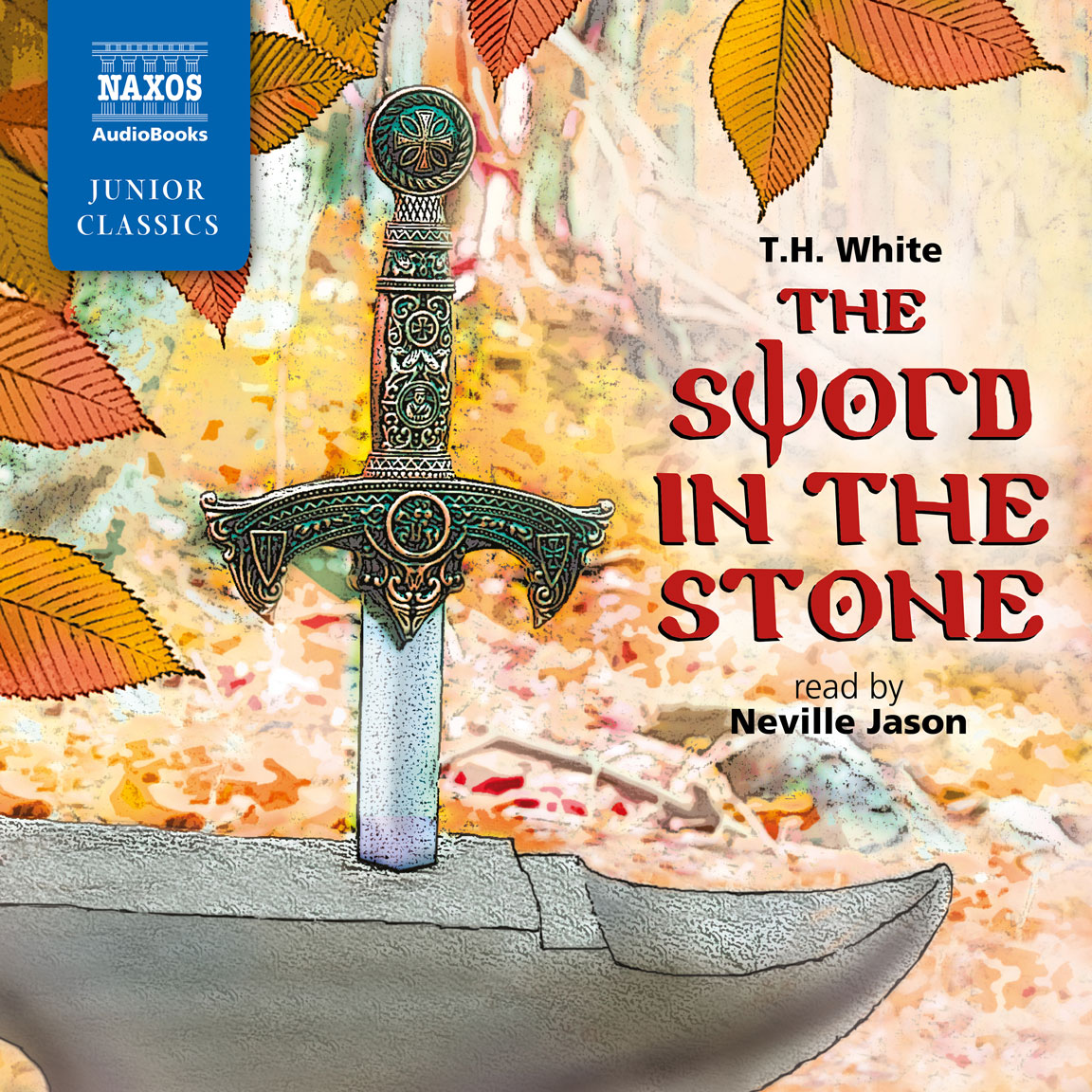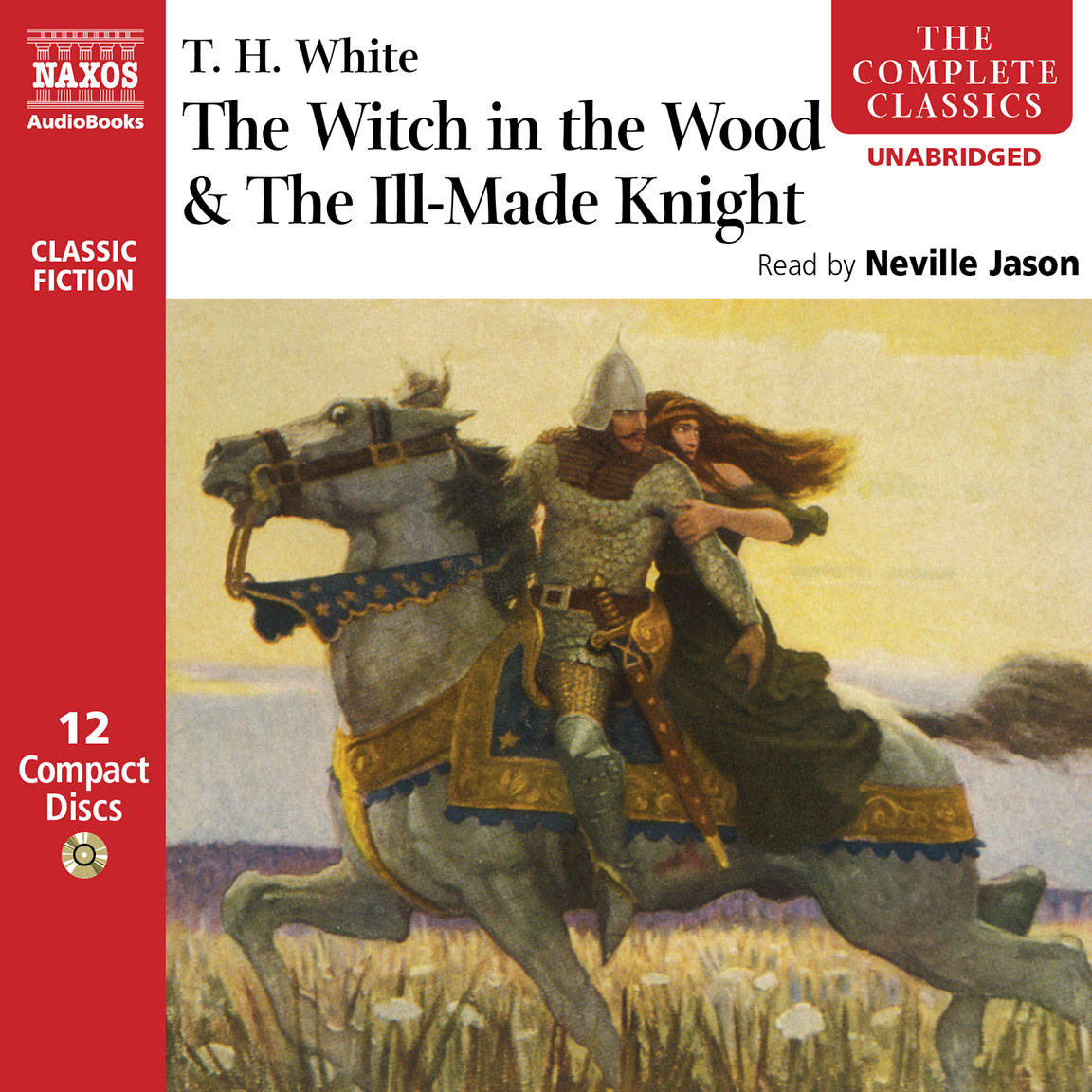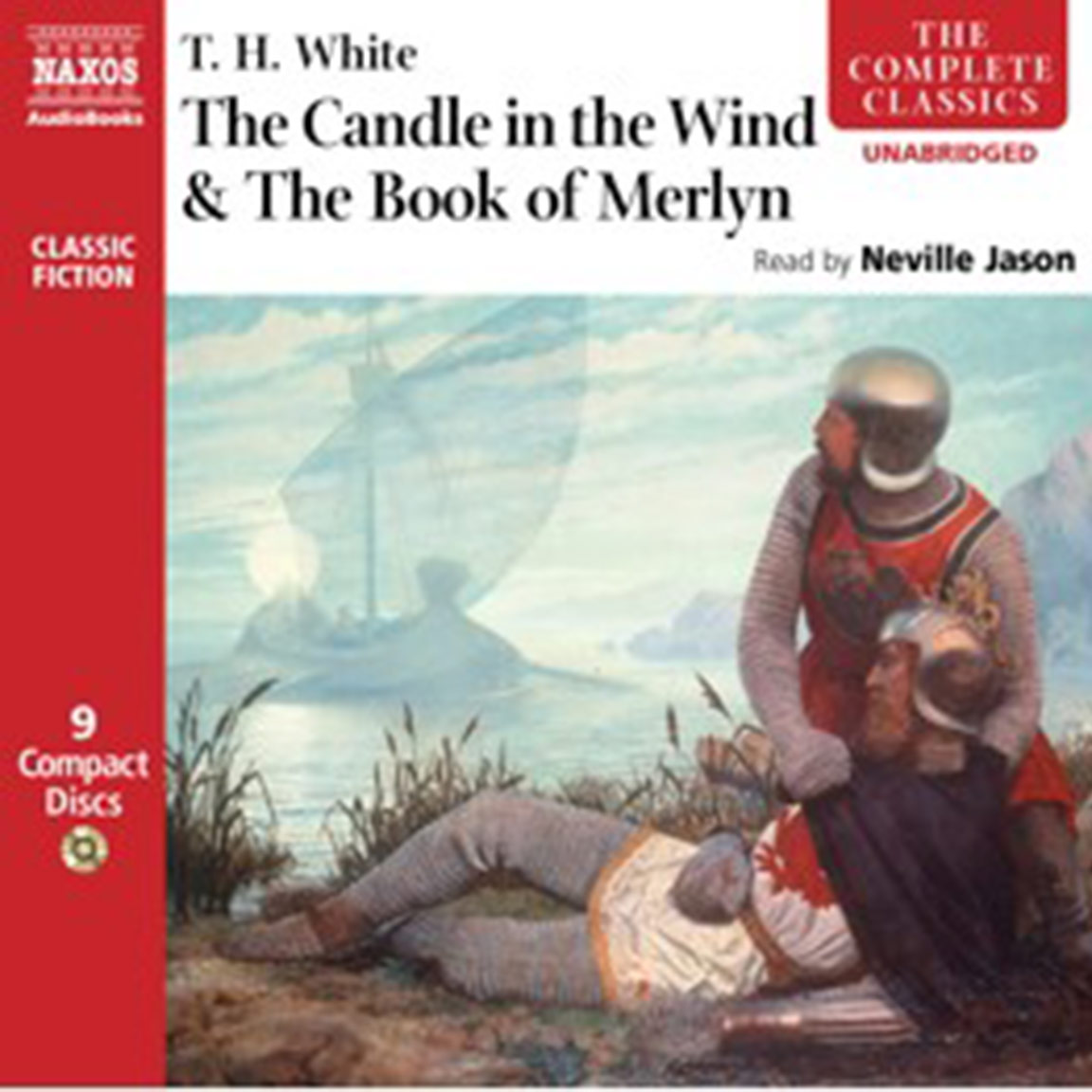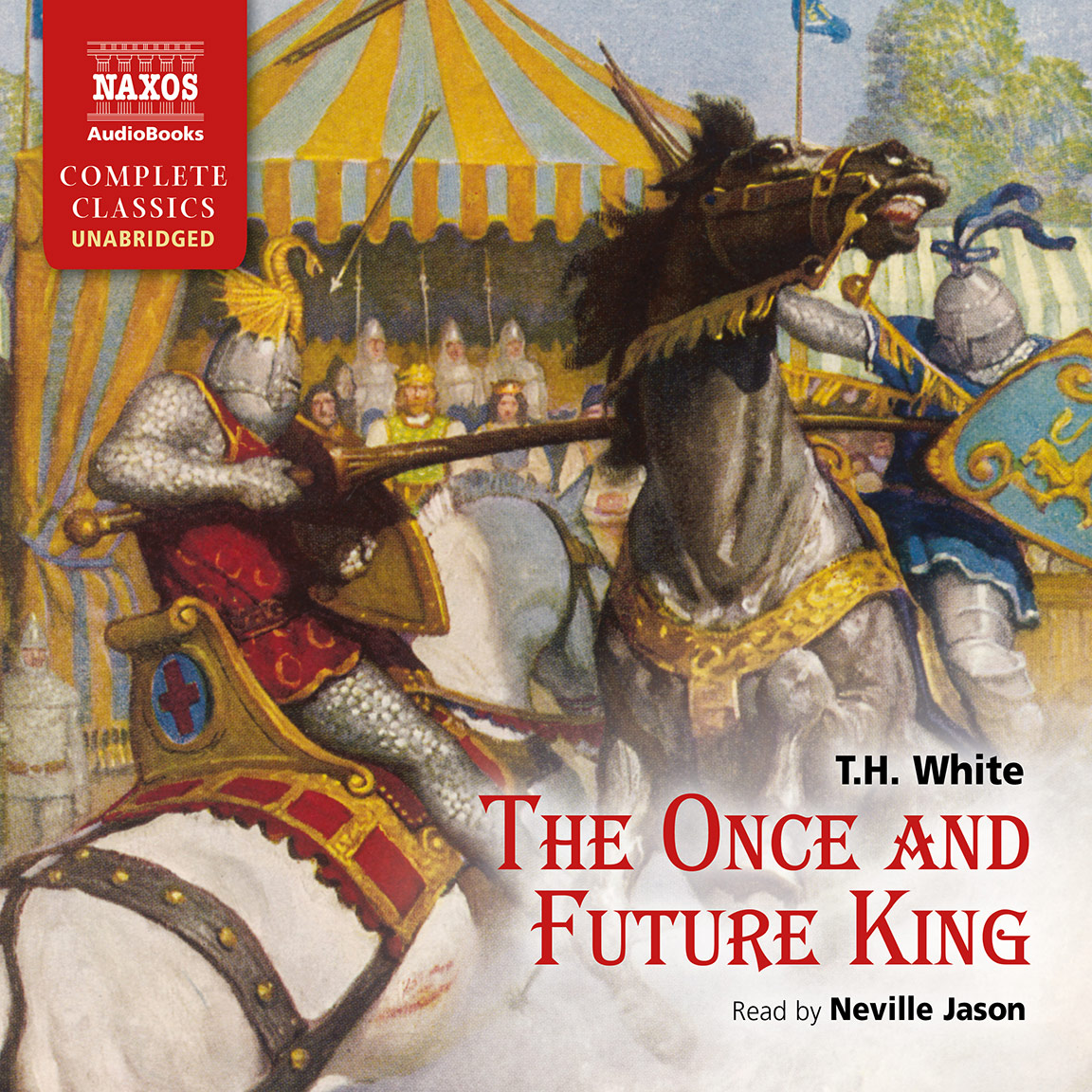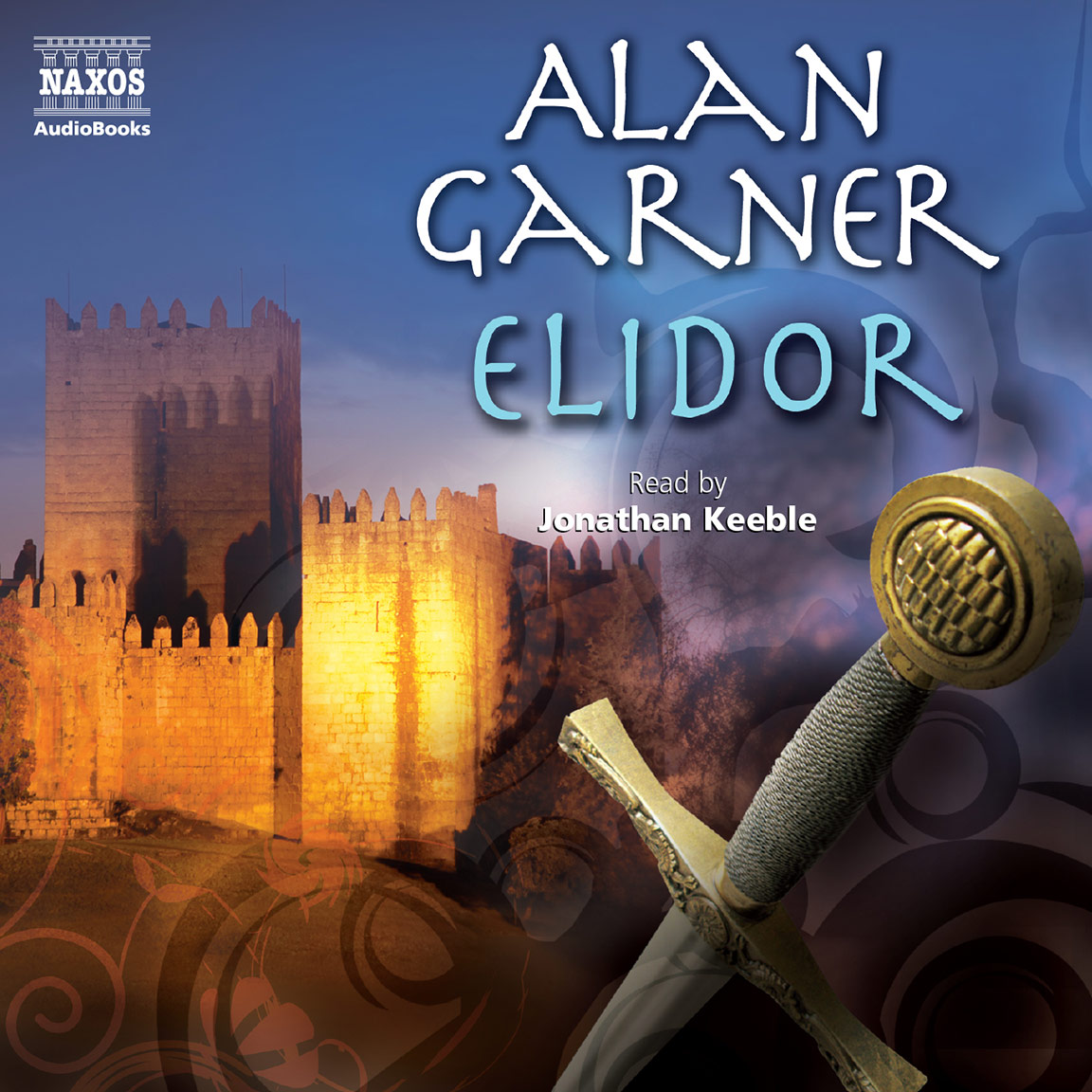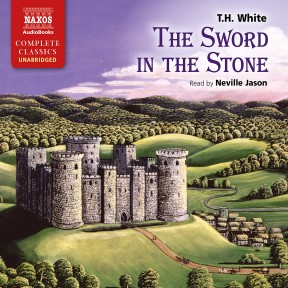
Audio Sample
T.H. White
The Sword In The Stone
Read by Neville Jason
unabridged
Kay and his foster-brother (known as the Wart) are living in the glorious castle of Sir Ector amid the wild and beautiful Forest Sauvage. But they are given a tutor – the magician Merlyn. And so begins one of the most inventive and charming retellings of the Arthurian legend, the first part of The Once and Future King. Through a series of adventures that involve being turned into animals, an encounter with a very hungry witch and a meeting with the real Robin Hood, Merlyn instructs his young charges in the ways of the world, and broader wisdom too. One of them will need it – the King has died leaving no heir, and a rightful one must be found by pulling a sword from an anvil resting on a stone…
-
Running Time: 9 h 41 m
More product details
Digital ISBN: 978-962-954-614-4 Cat. no.: NA885312 Download size: 142 MB BISAC: JUV007000 Released: January 2008 -
Listen to this title at Audible.com↗Listen to this title at the Naxos Spoken Word Library↗
Due to copyright, this title is not currently available in your region.
You May Also Enjoy
Reviews
“It is what I am for”. Merlin’s timelessly reassuring reply to the boy Arthur is one of many great moments in T. H. White’s magical tribute to Thomas Malory, The Sword in the Stone.
Irresistible too is the book’s opening line: “On Mondays, Wednesdays and Fridays it was Court Hand and Summulae Logicales”. With Merlin as his genial muddled mentor, “the Wart” learns chivalric ways and develops understanding of his own and other people’s characters by taking such shapes as those of falcon, fish and snake. Every page of this tale “of the merry old days of Gramarye” is jeweled with wit and medieval lore and, being reined back by listening, brings a richer appreciation of a book that has been deeply loved by generations of readers since it was published in 1938, and which was written as much for adults as for children.
Neville Jason is in general an avuncular narrator well matched to White’s prose. This is education the way it ought to be.
Christina Hardyment, The Times, 7 February 2008
Neville Jason’s approach, he says, is to be ‘humble to the material’ he is working with and to let the ‘powers of absorption work.’ It is apt that in this classic retelling of the King Arthur legend, the wizard Merlin often teaches the boy Arthur (aka Wart) by changing him into other creatures &nash; a fish, a bird –to learn by absorption, by being, with empathy being the least of the lessons taught. It is a perfect fit of sensibilities. Jason, who was awarded the Diction Prize by Sir John Gielgud at the Royal Academy of Dramatic Art, delivers fully developed characters with such warmth and spark that listeners are instantly transported to Sir Ector’s castle. Originally written in 1938, this audiobook is perfect for any J. K. Rowling fan, as its humor, intellect and playfulness feels as contemporary as a Harry Potter novel. In fact, Rowling has described White’s Wart as ‘Harry’s spiritual ancestor.’ Combined with the brilliant performance by Jason, what more could a fantasy fan want?
Publisher’s Weekly, March 2008
Booklet Notes
The Arthurian Legends are England’s great epic, as full and embedded a part of the cultural heritage as the Greek myths, with the same imaginative hold as Biblical tales or Shakespeare’s plays. The stories were originally collected and written by Sir Thomas Malory, and published in 21 books in 1485. These tales of chivalrous knights undertaking brave challenges, of a noble king bringing egalitarianism, honour and decency to a land governed by brutishness and violence, have served as political and personal metaphors ever since. They have inspired poets, playwrights, filmmakers, composers, artists, social commentators, mystics and New Agers of every hue. The search for Arthur’s final resting place, the possibility of his reappearance and his historical authenticity are argued with exactly the same passionate dedication by his followers as those of other faiths. Thomas Hanbury White (1906–1964) was by no means the first person to take the tales and turn them into something else; but few have had such a broad and thriving appeal. The Sword in the Stone in particular became template for a new telling of the iconic tale of the young Arthur finding himself king by innocently pulling Excalibur from its lodging, with Disney turning it into a hugely successful animated film in 1963.
But as with all retellings, White’s books are as much about the author and his times as they are about their sources. He was born in India to mismatched parents, whose various personal traits combined to create a troubled son – his father was an alcoholic, and his mother seems to have imposed such affectionate strictures on him that he was unable to be comfortable with women thereafter. He was a profound naturalist, deeply involved with observing nature, as well as hunting, shooting and fishing it, who served as a teacher after completing his own education at Queen’s College, Cambridge. He had already started writing while a student, and continued as a teacher, eventually dedicating himself to writing and naturalism from 1936. Often reclusive, he spent the Second World War in Ireland as a conscientious objector. He was also a medievalist, and this mixture of personal insecurity, love of nature, angry concern as war loomed over Europe and his feeling for the past were all brought together in The Once and Future King.
Talking animals, endearing magicians, terrifying witches, broad slapstick, jousts, feasts and splendour are all certainly in place; but these works are by no means fantastical children’s fiction. White was exorcising (perhaps just exercising) some of his personal demons – there is, for example, a deal of cruelty in the books; he was using a kind of reverse anthropomorphism to indicate how man should be more like the animal kingdom – or at least should look to it for examples; and he was giving the old stories a dark and pertinent edge as a global war approached and dictatorship threatens the world. As the story progresses, it moves from being a panegyric over the lost innocence and knowledge of an earlier age, to a reworking of Greek tragedy, and finally to a polemic against man’s short-sighted belligerence and doomed political systems.
The first book is ostensibly about how Arthur became King, but most of it sees him being brought up in a rural world that owes much to White’s notions of an ideal childhood. Here, the young Arthur learns the ways of animals and the ways of nature; how to be honest and brave; and he gets the opportunity to talk to animals as one of them, thanks to the interventions of his tutor, the magician Merlyn. The second develops Merlyn’s teachings on the issue of Might vs. Right, and sees the invention of the Round Table; but also introduces the theme of the sins of the fathers being visited on their sons. Arthur’s birth was the result of vicious and tragic circumstances, and he himself has unwittingly committed incest. The third book is about Lancelot and Guenever – their love for each other despite Lancelot’s unattractiveness, Lancelot’s attempts to prove himself in the quest for the Holy Grail, and the earliest warnings of the destruction of what Arthur has created. The fourth sees the climax of these various plot-lines, as Arthur’s incestuous sin comes to haunt him and his court, and in the process threatens not just the end of his reign, but also the essence of what he and his knights had been striving for – a peaceful nation where justice was valued above force, where the spirit was fed as well as the body, and where Man recognised his place in the natural world, and treated it accordingly. The fifth book is a kind of anti-war dream sequence (though Merlyn would dispute that) in which Arthur is harangued by his old tutor about the gross failings of humanity, and given a chance to examine different political systems in the thin disguise of observing ants and geese.
White was not just offering a reworking of the Arthurian legend. He clearly had his own deeply personal, as well as broadly social and political, issues to place in the context of a lost world of grace and humanity. What gives these books such depth, however, is not just the plot or the underlying implications of the storylines (strong as they all are); nor is it their place in epic, fantasy or Arthurian legend. It is partly the characters – honest, steadfast Arthur; passionate, self-hating Lancelot; cold, driven Mordred; the outstanding Merlyn, absent-minded, humane and fallible, but always invaluably putting things into perspective. It is partly of course the imaginative strength of the author, bringing such worlds as medieval tournaments, ants’ nests, court life, boar hunts or battlefields alive with vivid detail. It is partly, too, the unashamed brio with which White describes the food of the time, or the intimate features of feathers of a particular bird, or the slightest aspect of hunting, heraldry or armour; or his unapologetic use of terms that were obscure when he wrote them, and have all but disappeared now. White was not condescending to a childish audience, but taking every reader with him into Arthur’s more-than-mythical kingdom to see what it stood for, how it failed and what we can still learn from it.
The Sword in the Stone is a welcome to Gramarye, or Merrie England, or the mythical past of Britain as reimagined by White. At the castle of the kind and good Sir Ector, set in an enormous clearing of a still more enormous forest, he is discussing with his typically (if anachronistically) clubby friend Sir Grummor Grummursum what to do with his son Kay and his ward, known as the Wart. Clearly, what they need is a tutor of some sort. And the boys find themselves by chance under the tutelage of one Merlyn, a captivating magician living his life backwards, who realises he has a duty to teach these two well – and one of them in particular.
Through a series of adventures that involve being turned into animals, a hungry witch and a meeting with the real Robin Hood, Merlyn instructs his young charges in the ways of the world, and with lessons of a broader wisdom, too. But his teachings seem aimed principally at the Wart, something Kay begins to resent – after all, Kay is to become a full and proper knight, and the Wart can only hope to be his squire. But there is good reason for Merlyn concentrating his efforts on the Wart, as they discover when, after hearing of the King’s death, they all go to London to a grand tournament. The King had no heir, and a rightful one must be found by testing the mettle of those knights who wish to take on the role. To prove themselves, they must pull a sword from an anvil resting on a stone…
A note on the text
This version of The Once and Future King comprises all five of T. H. White’s Arthurian tales published in three sections (The Sword in the Stone; The Witch in the Wood and The Ill-Made Knight; and The Candle in the Wind and The Book of Merlyn). The first three books were originally published separately between 1938 and 1940; the fourth was added when the first collected version of the stories – titled The Once and Future King – was published 1958. But as White’s vision of the broader purpose of the story developed, he wanted to add The Book of Merlyn to the collection; and also began making other textual changes. However, he was unable to complete this general revision before his death in 1964. His revisions, in their unfinished state, placed some sections of the final book (The Book of Merlyn) into The Sword in the Stone, cutting some of the original book to accommodate them. However, these sections were not removed from their original place in The Book of Merlyn, and as a result there was substantial repetition.
In this audiobook version, these repetitions have been removed, and Madam Mim, Galapas the giant, the dream of the trees and the dream of the rocks have been reinstated; but Arthur’s first meeting with Morgan le Fay (which White introduced to replace a sequence about meeting cannibals) has been kept. This allows The Book of Merlyn to have its full weight in the collection, maintains some of the most memorable and endearing characters from the original first book (The Sword in the Stone), but at the same time allows a major character to make her appearance in an earlier section of the book, and thus prefigure her later role.
Roy McMillan
